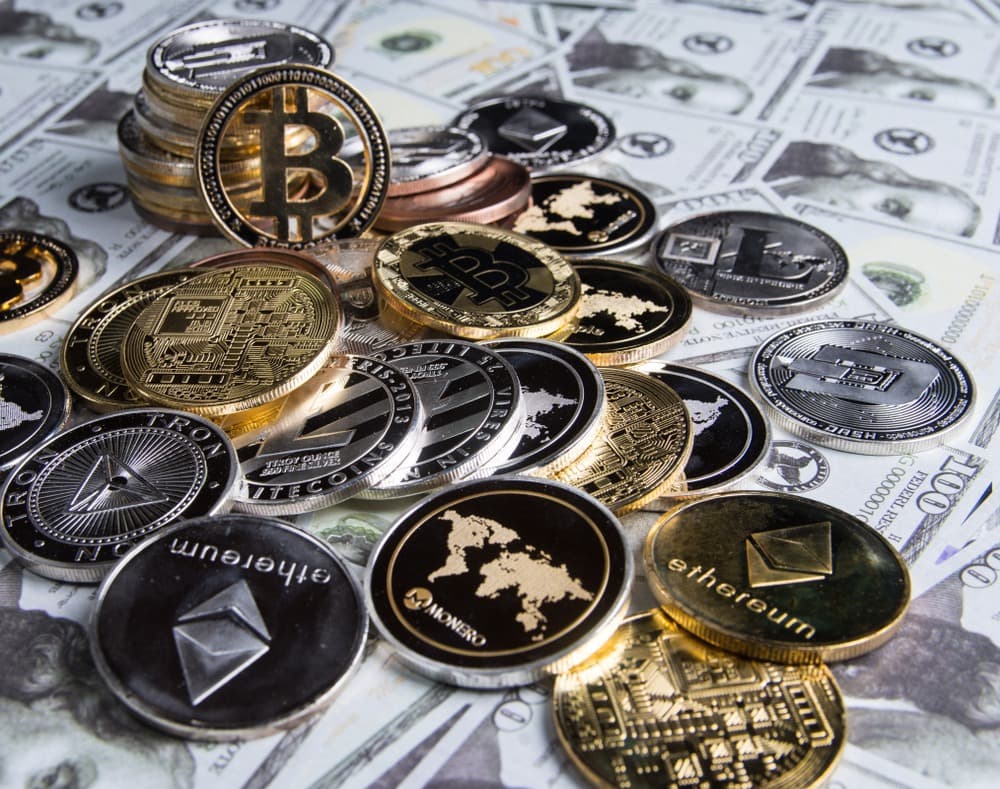
“It might make sense to just get some in case it catches on.”
—Satoshi Nakamoto

December 13, 2024— Microsoft shareholders headed off an attempt at what Mark Jeftovic calls “the Bitcoin Effect” – when a company uses the cryptocurrency as its store of value, rather than in US dollars.
That’s because a shareholder proposal at Microsoft, to put just a small percentage of the company’s cash into bitcoin, failed Tuesday. By a wide margin.
Today, several companies have adopted bitcoin as a treasury asset, most notably MicroStrategy, whose CEO Michael Saylor has become a bitcoin acolyte and turned his company into a leveraged bet on just bitcoin.
We expect more companies will embrace bitcoin as accounting rules start to change in favor of holding crypto. Although most won’t be able to corner a 2% share bitcoin’s total supply like MicroStrategy already has. Saylor’s stake in Bitcoin has risen to $40 billion.
Per Bloomberg:
Bolstered by Trump’s victory and the nomination of Paul Atkins as the Securities and Exchange Commission chief, Bitcoin has surged more than 130% this year to around $100,000. Exchange-traded funds own it, the government is being urged to buy it, and demand for Bitcoin-denominated loans has tripled. All of it is vindication for the oft-ridiculed Saylor as the barriers once blocking the growth of cryptocurrencies are being torn down.

For now, however, the Microsoft defeat is a sign that not everyone is into bitcoin.
The rejection of bitcoin by MSFT is not unlike the SEC rejecting bid after bid for a bitcoin ETF. Sometime in the years ahead, the tune will change.
We can think of $367 billion reasons right now why.That’s how much the U.S. budget deficit was. Not for 2024, mind you, just for November, 2024 — the highest balance sheet miss on the Federal record.
The November deficit is up 64% since 2023, which, if our calendars are correct, was just last year. And it’s about triple the deficit level from the 2013-2017 period.
For the first two months of fiscal 2025, Uncle Sam is going into hock for $624 billion.
When bitcoiners say it has no top because the dollar has no bottom, well, at least in an obtuse sense, you can see the reality playing out…in real time.
By the time companies like Microsoft do buy in, it’s possible bitcoin will be flirting with seven figures, not six. As the bitcoin enthusiasts say, you get in at the price you deserve.
You can get a more nuanced view of Grey Swan Investment Fraternity contributor Mark Jeftovic’s “Bitcoin Effect” here. Over time, rising corporate and nation-state adoption should drive prices even higher, while the ETFs have given the crypto $ price a measure of stability.
It’s a volatile asset, to be sure. As all innovations tend to be. That volatility has also masked the best investment returns of the past 15 years.
Even at today’s prices, Grey Swan investors should have some exposure. The 1-5% range should do just fine. The big potential upside in the years ahead can still move a portfolio, and the downside isn’t as rough when it’s a small part of your overall investments.
In the meantime, even without Microsoft and billions of dollars in buying demand, bitcoin’s post-halving rally has remained intact.
Following the charts? Next stop means a price of anywhere from the $120,000 to $140,000 by its peak next year.
If you want to speculate, depending on how various proposals to create a bitcoin strategic reserve pan out, the price could go even higher.
Below, honorary Grey Swan Investment Fraternity member Frank Holmes makes a case for $200,000. ~ Enjoy, Addison
Analysts See $200,000 Bitcoin By 2025 As Adoption Spikes
Frank Holmes, U.S. Global Investors
Just a few short years (months?) ago, few would have believed it possible. But it happened: Bitcoin has traded above $100,000 for the first time ever.
Global adoption of the world’s largest digital asset by market cap is getting harder to ignore. We’re no longer talking about magic internet money favored by tech enthusiasts. We’re talking about a serious financial asset that central banks, corporations and even national governments are now paying close attention to.
Consider the most recent developments: President Nayib Bukele’s El Salvador, the first nation to adopt Bitcoin as legal tender in 2021, has reported more than $333 million in Bitcoin profits.
And here in the U.S., everyone’s talking about the incoming Trump administration’s plans to establish its own strategic Bitcoin reserve.
More Than Digital Gold
Part of Bitcoin’s allure is that it shares many characteristics with gold. Last week, Federal Reserve Chairman Jerome Powell said he believes Bitcoin is a competitor to gold rather than the U.S. dollar.
“It’s just like gold, only it’s virtual, it’s digital,” Powell told the audience at the New York Times’s DealBook Summit.
I believe this comparison says a lot. Gold has been a trusted store of value for thousands of years, prized for its scarcity and global liquidity. Central banks just reported buying 60 metric tons of the precious metal in October, the most in a single month this year.

Bitcoin shares these attributes in a modern, digital form. Unlike fiat currencies, there’s a fixed supply of Bitcoin, capped at 21 million coins. That scarcity, combined with growing trust and acceptance, has helped it ascend to this six-figure milestone.
For the record, I don’t believe gold is going anywhere. It’s been around for over 5,000 years and is deeply ingrained in global commerce and traditions. Gold trades over $160 billion every day, making it the second-most liquid asset category after the S&P 500, according to the World Gold Council (WGC). Plus, unlike Bitcoin, gold has many practical use cases, from jewelry to electronics.
But Bitcoin is carving out its own path, proving it can also serve as a store of value in turbulent times. The chart below shows the Bitcoin-to-gold ratio, which tells you how many ounces of gold it takes to buy one Bitcoin. Last week, the ratio surpassed 38, a new all-time high.

Political Winds Shifting in Bitcoin’s Favor
It’s not just Wall Street that’s warming up to Bitcoin. The political climate appears to be shifting as well.
President-elect Donald Trump—a former crypto skeptic turned fan—recently nominated Paul Atkins, a conservative and crypto-friendly lawyer, to replace Gary Gensler as the head of the Securities and Exchange Commission (SEC). During his tenure at the SEC from 2002 to 2008, Atkins fought for balanced, innovation-friendly policies. His return could pave the way for more regulatory clarity, attracting even more institutional capital into the crypto space.
Trump also just named billionaire venture capitalist David Sacks as his “AI and crypto czar.” Sacks, a member of the so-called PayPal Mafia, is another strong advocate for clear regulations in cryptocurrency and artificial intelligence. His leadership, I believe, could help position the U.S. as a global leader in emerging technologies, including Bitcoin, blockchain and AI.
And on Capitol Hill, Senator Cynthia Lummis of Wyoming, a longtime Bitcoin advocate, has proposed the BITCOIN Act, which, if passed, would lead to the creation of a U.S. strategic Bitcoin reserve. Just as the Strategic Petroleum Reserve (SPR) ensures a steady supply of oil in times of emergency, a Bitcoin reserve could serve as a digital financial backstop, a buffer against economic shocks and runaway inflation.
Analysts’ Forecasts Turn (Even More) Bullish
Major financial institutions and research firms aren’t sitting idle. Bernstein Private Wealth Management projects Bitcoin could reach $200,000 by late 2025, a forecast echoed by Standard Chartered.
One of the key drivers of these higher forecasts is the inflow of institutional money. Big investors—corporations, pension funds, endowments—are starting to treat Bitcoin as a legitimate part of a diversified portfolio. According to analysts, if U.S. retirement funds or a proposed U.S. strategic Bitcoin reserve started accumulating even a small percentage of their assets in Bitcoin, demand could skyrocket.
MicroStrategy, a publicly traded company, has shown leadership in this area. Its aggressive three-year Bitcoin purchasing plan has already exceeded expectations. Its strategy? Treat Bitcoin like a corporate treasury reserve asset.

Allocate Responsibly
So, what does all this mean for investors?
First, it means that Bitcoin is no longer a fringe phenomenon. At over $100,000 per coin, it’s a force to be reckoned with, attracting serious interest from global institutions and governments.
That said, investing in Bitcoin should still be approached thoughtfully. Volatility remains high. While gold typically moves at a measured pace, Bitcoin’s price can swing more dramatically. Proper allocation could provide exposure to Bitcoin’s growth potential without taking on excessive risk.
As regulators become more crypto-friendly, and as the U.S. government considers strategic reserves, Bitcoin’s credibility and staying power have only grown. This isn’t to say Bitcoin will replace gold overnight or that it comes without risks. But after crossing the psychologically important $100,000 mark, it’s clear that the world’s largest cryptocurrency is maturing into a bona fide financial instrument worthy of consideration. ~Frank Holmes, U.S. Global Investors
Regards,

Addison Wiggin,
Grey Swan
P.S. Here’s a blatant example of what our friend Michael Rectenwald calls “inversion ideology” – when one side adopts another’s position for political gain.
From today’s Free Press commenting on Janet Yellen’s statement yesterday about the deficit and national debt:
“It’s so bad! We’re in debt bad, sweetie. We’re in ‘bring Daddy this drink and go to your room’ debt. We’re in “check the mattress” debt. But at least we can finally say it! That’s per United States Secretary of the Treasury Janet Yellen this week, who poured herself a Scotch and said: “I am concerned about fiscal sustainability, and I am sorry we haven’t made more progress. I believe that the deficit needs to be brought down.” I am concerned about fiscal sustainability, she says. The next guy better not spend too much or do anything crazy. Deficit is the key word now for the Dems as Biden sundowns in the Oval. And I’m happy, I guess. I, too, think our spending is crazy.
“To recap, Biden spent $175 billion forgiving student loans, which every economic analysis agreed was a handout for the affluent, a cash transfer to his staffers and their friends, a bailout for a corrupt university system. Surely Janet Yellen has been saying deficit all along, right?”
Heh.
Wrong.
P.P.S. Tonight’s the annual holiday party for the Agora Companies, the publishing group of which we’re proud to be a part. Perhaps a “rager” like the days before the pandemic? Your thoughts on the holiday season 2024 are welcome here: addison@greyswanfraternity.com


